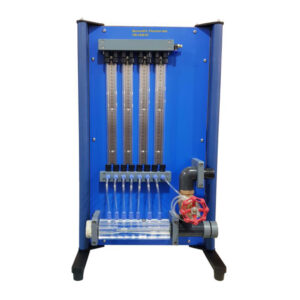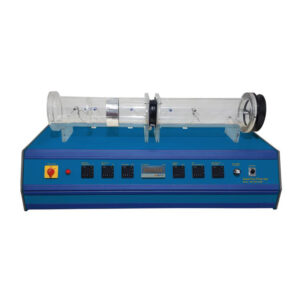An extended surface is commonly used in reference to a solid that experiences energy transfer by conduction within its boundaries, as well as energy transfer by convection between its boundaries and its surroundings. The extended surface is most often utilized in the removal of heat from a body. In this case, the extended surface is often referred to as a “fin”. A fin with a cylindrical shape and a high aspect ratio (length/diameter) is called a pin. Fins are often seen in electrical appliance cooling such as in a computer power supply or substation transformers. Fins are also used for engine cooling. Figure 1 illustrates different fin shapes. The Extended Surface Heat Transfer Extended consists of one electrically heated rod and nine temperature sensors to study heat transfer by conduction in an extended surface. The sensor measures temperature distribution along the rod with one sensor used as a control sensor (ambient temperature). Optional interchangeable fins can be installed in the apparatus to enhance the heat dissipation functionally of the apparatus. This instrument can help student to understand the basic concept of heat transfer and the importance.




